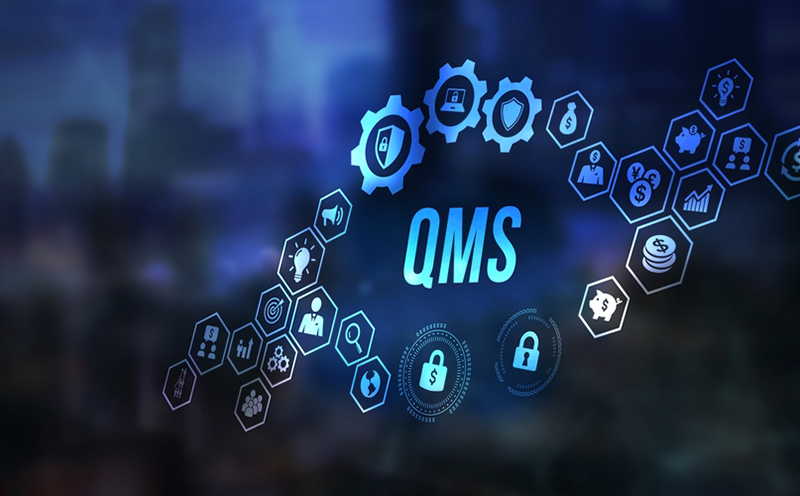December 5, 2023
With an unprecedented level of challenge and change in manufacturing, there is tremendous pressure to rapidly transform quality management processes.
When evaluating EQMS solutions, look for these 10 design factors and capabilities that enable comprehensive control over end-to-end quality management, rapid and seamless deployment, the ability to leverage advanced technologies, and the flexibility to expand quality oversight in alignment with company growth and expansion.
-
A single solution
Select an EQMS that serves as a single solution to replace manual and legacy quality systems by consolidating all core quality management and regulatory compliance management processes with the platform. This eliminates the need to budget for and install individual quality “modules.”
Choose an end-to-end EQMS for a centralized source of truth that facilitates the search and retrieval of documents. All users and stakeholders will go to only one place for all quality documents and tasks. Likewise, auditors and regulators will be able to find everything they need in one place.
-
Enterprise-wide integration
To drive quality enterprise-wide, choose an EQMS with an open integration interface that delivers robust, flexible interaction with existing information systems and databases to facilitate quality production. This includes integration with reporting tools, including Microsoft® BI, SAP® Crystal Reports, SAP® Business Objects, IBM Cognos® and Qlik®, enterprise business systems including ERP, PLM, LIMS, CRM, CMMS, and internally developed applications and databases.
-
Out of the box deployment
An EQMS with processes and workflows pre-configured to industry-specific standards and regulations, such as FDA CGMP, FDA 21 CFR Part 11 & 820, EU GMP, electronic medical device reporting (eMDR/EU MDR), and ISO quality standards, means the solution is available for a manufacturer’s quality management team to use from day one. They can start with the solutions they need to deploy first, and then seamlessly integrate new processes as required.
Because manufacturers vary in their level of quality management process and technology maturity, an EQMS that is available on-premise and in a multi-tenant cloud application, both with identical software, offers flexibility to deploy the model that fits the current needs of the company.
-
Dynamic and configurable
A highly configurable EQMS enables a manufacturer to shape the solution to support unique or complex applications and easily adapt and scale over time to meet evolving business needs. Point-and-click administration (forms design, signatures, escalation rules, etc.) eliminates the need for re-validation as the system is enhanced.
-
Standardized workflows
Variability increases the risk of errors and inefficiencies. The ability to standardize all document-based processes within the EQMS drives consistency, accuracy, and efficiency. When the quality team needs to create a new standard operating procedure (SOP) or launch a corrective and preventive action (CAPA), they can leverage standardized formats in the EQMS instead of having to start from scratch.
-
Full visibility and control
Choose an EQMS that facilitates end-to-end quality and compliance management visibility and control to help the quality management team make informed decisions to continually improve quality operations. The most comprehensive solutions feature dashboards, status reports, alerts, notifications, and escalations that keep teams and management aware of late tasks and review requests. If an issue is detected, users should be able to assign a corrective action through the solution and follow it to closure, with linkages to the task that the issue was initiated from.
-
Automation
When an EQMS automates routine tasks in quality processes, including document control, change control, training management, audit, CAPA, and nonconformance management, this improves efficiency, accuracy and can dramatically reduce the number of hours devoted to daily tasks.
-
Risk-based compliance
An advanced EQMS solution automatically coordinates, tracks, and assesses activities to ensure compliance with global regulations and ISO standards, and links findings, evidence, applicable policies and procedures, training, and electronic approvals to any task. It provides quality professionals with instant, detailed insight into compliance risk and status with graphical management dashboards.
-
A collaborative ecosystem
Connected processes and workflow integration and standardization creates a quality ecosystem where users, managers, regulatory bodies, and suppliers can collaborate on quality issue management, compliance requirements, reporting, training, and audits.
-
Advanced analytics and reporting
An EQMS with real-time key performance indicators (KPIs), powerful analytics, trending, and reporting tools presents quality management teams with actionable insights to make informed, data-driven decisions. They can shift from reacting to quality issues as they arise to proactively identifying and addressing factors that can lead to poor quality to prevent downstream impacts.
Conclusion
To thrive in today’s challenging and ever-changing environment, manufacturers need exceptional quality control software solution capabilities that enable them to pivot rapidly, enhance efficiency, reduce risk, maintain compliance, and ultimately deliver high-quality products to market quickly and cost-effectively.
To learn more about the benefits of automating your quality processes and digitalizing your data, read this whitepaper: Bridging the Quality Management Digital Divide.
About the Author
Stephanie Ojeda is Director of Product Management for the Life Sciences industry at AssurX. Stephanie brings more than 15 years of leading quality assurance functions in a variety of industries, including pharmaceutical, biotech, medical device, food & beverage, and manufacturing.


